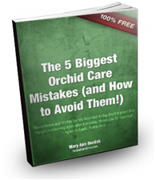 Orchids grow in all types of habitats around the world except for in the extreme cold. The richest concentration of different varieties is found in the Himalayan Mountains in Nepal. While the tropics contain the largest majority of orchids, Oceania, Europe and temperate Asia contain 40 to 70 genera, while North America contains 20 to 60.
Orchids grow in all types of habitats around the world except for in the extreme cold. The richest concentration of different varieties is found in the Himalayan Mountains in Nepal. While the tropics contain the largest majority of orchids, Oceania, Europe and temperate Asia contain 40 to 70 genera, while North America contains 20 to 60.
The rule of thumb for growing an orchid indoors is to mimic its natural environment. It is extremely important to know the natural habitat of the one that you purchase. An orchid that grows in a bog in Ohio will have completely different growing requirements than the epiphytes found in the tropics.
Light
For the majority of indoor orchids, an east or west facing window that provides bright, indirect sunlight is best. Most varieties can only handle a maximum of one hour of sunlight per day. If too much direct sun is provided, the leaves will turn yellow. To compensate, more moisture and air circulation are required.
Indoor gardeners should be careful not to provide too much heat during the winter months, particularly in the evening. If the temperature is too high, the orchids’ rate of transpiration during the evening will be elevated, using up more energy than the plant produces during the day. Overheating during winter nights is a sure-fire way to kill an orchid.
Soil
Most orchids prefer to have turbulent air about the roots, meaning that soil should be loose, well-drained and not compacted. If there is insufficient air at the roots, the growing medium will begin to rot due to excess moisture, leading to fungal growth and diseases. If the orchid is an epiphyte that naturally grows on tree trunks or rocks, no soil is needed.
Moisture
High humidity is the normal condition for orchids that naturally grow in the tropical rainforest, so if your orchid stems from there, frequent misting is advised. To increase evaporation near your orchids, you could line a shallow tray with stones and fill the spaces with water.
Watering
Orchids like to be drenched and then not watered again until they have almost completely dried out. You will know that it is time to water again if you stick your finger in the soil and the top 1/2 inch to 1 inch is completely dry. A general guideline is to water them once per week during the summer and once per month during the winter. Knowing your orchid’s natural habitat will help you to determine the correct frequency of watering. If your orchid is naturally found in a marsh or bog, frequent watering may be required.
Fertilizer
Indoor orchids should only be fertilized during the active growing season of the summer months, not during the winter dormant period. A weak solution of a powder or liquid fertilizer may be given every two weeks.
One of the biggest mistakes that people make is treat the indoor orchid as if it is a precious piece of porcelain. Many people worry and obsess about the amount of water to give and the light requirements. If the orchid is not doing well in one location, try another. By just following the above simple rules, an orchid can last a lifetime.
What’s the longest one of your orchids has lasted? Leave a comment below and tell us about it.
For more information about growing orchids, check out these orchid care laws.




Thanks much for creating this wonderful website. I agree with your line saying “For the majority of indoor orchids, an east or west facing window that provides bright, indirect sunlight is best”. Some websites and beleive me I have been through many of them which say west facing window is not ideal (of course it depends on the amount of sunlight it is getting) only east or south is good but based on experience and the fact that all of my orchids are placed on west facing windows of the living room and spiking i would say the west windows work great for me.
That’s a great point! 🙂 And thanks for letting us know and giving us that feedback. We appreciate your comments! – Mary Ann
Hi, I’ve had a beautiful moth orchid for at least 10 years and during that time it has lived and bloomed happily on my kitchen windowsill. Every time it has finished blooming I have cut down the withered stem and before long it has bloomed again.
HOWEVER last time it had finished blooming (late December 2012) I cut down the stem (without thinking) BEFORE it had withered and since then it looks like the plant is dead – OH NO!
The pot (still the original one) is see-through and I can see that the roots are still green as they always have been, but the top of the plant looks completely dead. Also, for probably the last 2-3 years, some of the roots have been growing out of the bottom of the pot and are now probably 3-4 inches long. I haven’t cut them back at all because it seemed perfectly happy until now.
WHAT CAN I DO?! Do you think it really is dead? It has always brought me so much pleasure. I feel so sorry that I may have killed it by cutting down the stem too soon.
Many thanks for your help. Gill
It can still sprout a new growth. You might want to consider repotting though. Here’s an article about repotting orchids. – Mary Ann
Hi…..My wife and I have 6 very beautiful Moth orchids, we have had these for the past 6 years, they have always been on a north facing kitchen window above the sink, they just seem to smile in the steam. A couple of weeks ago I bought a blue Moth orchid, was told it’s been injected with colourant, what is this colourant and where do we buy it?….Many thank’s. Pete..
I don’t think you can buy it. I haven’t been able to find information on exactly how they are making the orchids blue. I personally don’t feel it’s a great idea to use dyes on your orchids because it’s not particularly good for them. There is an interesting video I found about a man using food coloring. Here is that video. Thanks! – MAB
Pretty nice post. I simply stumbled upon your weblog and wished to mention that I’ve really loved surfing around your blog posts.
In any case I’ll be subscribing to your feed and I hope you write again soon!
Thank you! Happy to have you! 🙂 – Mary Ann